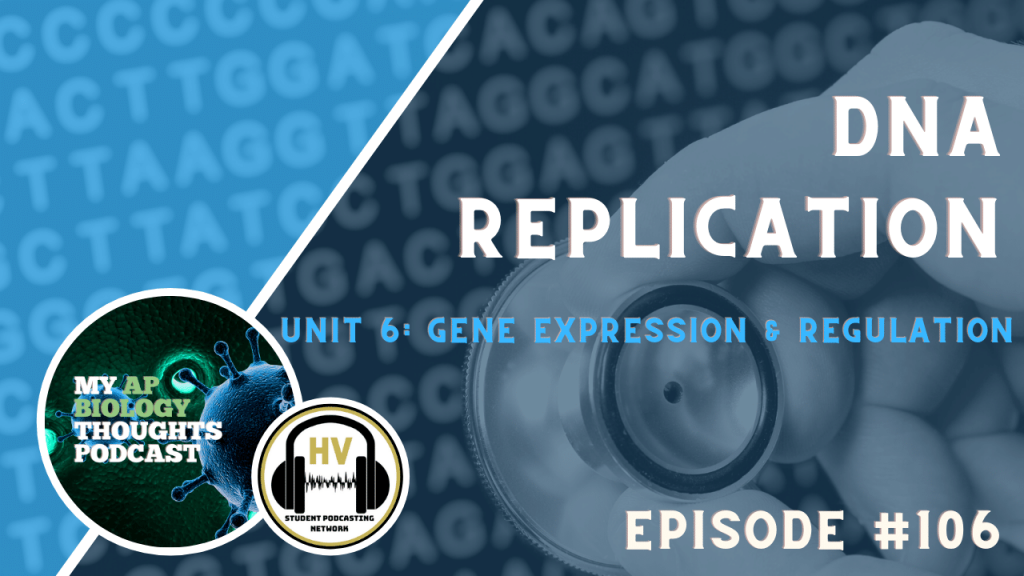DNA Replication

My AP Biology Thoughts
Unit 6 Gene Expression and Regulation
Welcome to My AP Biology Thoughts podcast, my name is Morgan and I am your host for episode # 106 called Unit 6 Gene Expression and Regulation: DNA Replication. Today we will be discussing the process by which cells replicate their DNA
Segment 1: Introduction to DNA Replication
- Difference between prokaryotic and Eukaryotic DNA
- P is one circular piece of dna where eukaryotic are multiple linear chromosomes
- DNA replication is semi-conservative
- Double helix is split in two and then each new strand is synthesized so to new double helices are made, each with one old and one new strand
- very complex but very fast
- Extremely accurate (only 1 in a billion bases are messed up)
- Have to prime the DNA for replication
- Primers are short molecules that attach to the dna at the origin of replication
- Mde by the enzyme primase
- Helicase is the enzyme that unwinds the double helix- initiates the replication fork (where two strands split apart)
- Multiple replication forks in eukaryotic dna
- Topoisomerase checks problems in the DNA before replication and maintains the structure
- DNA polymerase is the enzyme that synthesizes the new DNA strand- reads the bases and matches up complementary nucleotides
Segment 2: More About the process of replication
- Replication initiation can occur at both directions from the origin where the primer binds
- DNA polymerase can only add nucleotides in the 5 to 3 prime direction, and read the strand of dna in the 3 to 5 prime direction
- Leading strand is continuous
- Lagging strand is discontinuous, has to read and synthesize in short segments (okazaki fragments)
- Enzyme ligase seals together the fragments
- Energy needed for this process (remember forming bonds between the nucleotides requires energy)
Segment 3: Connection to the Course
- Connection to mitosis
- S phase of mitosis is dna replication
- Necessary for cell division to make the same amount of chromosomes in daughter cells
- Process is close to the same for rna synthesis
- Leading and lagging strands
- Okazaki fragments and 3 to 5 prime direction vs 5 to 3 prime direction
Thank you for listening to this episode of My AP Biology Thoughts. For more student-ran podcasts and digital content, make sure that you visit www.hvspn.com.
Music Credits:
- “Ice Flow” Kevin MacLeod (incompetech.com)
- Licensed under Creative Commons: By Attribution 4.0 License
- http://creativecommons.org/licenses/by/4.0/
Subscribe to our Podcast
Connect with us on Social Media
Twitter @thehvspn
Welcome to My AP Biology Thoughts podcast, this is episode # 106 called Unit 6 Gene Expression and Regulation: DNA Replication.

